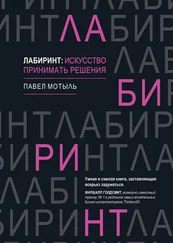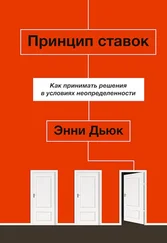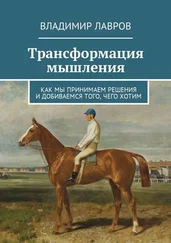Schultz, Robert, et al. The Role of the Fusiform Face Area m Social Cognition: Implications for the Pathobiology of Autism. Philosophical Transactions of the Royal Society, Series В 358 (2003): 415—27.
Schultz, Wolfram. Predictive Reward Signal of Dopamine Neurons. Journal of Neurophysiology 80 (1998): 1—27.
Schultz, Wolfram,P Dayan, andP R. Montague. A Neural Substrate of Prediction and Reward. Science275 (1997): 1593—99.
Schwartz, Barry. The Paradox of Choice. New York: HarperCollins, 2004.
Shaw, Philip, Jason Lerch, Deanna Greenstein, Wendy Sharp, Liv Clasen, Alan Evans, Jay Giedd, F. Xavier Castellanos, and Judith Rapoport. Attention- Deficit/Hyperactivity Disorder Is Characterized by a Delay in Cortical Maturation. Proceedings of the National Academy of Sciences104 (2007): 19649—54.
Shiv, Baba, Ziv Carmon, and Dan Ariely. Placebo Effects of Marketing Actions: Consumers May Get What They Pay For. Journal of Marketing Research, (November 2005): 383—93.
Shiv, Baba, and Alexander Fedorikhin. Heart and Mind m Conflict: The Interplay of Affect and Cognition m Consumer Decision Making. Journal of Consumer Research 26 (1999): 278—92.
Shiv, Baba, George Loewenstein, Antoine Bechara, Hanna Damasio, and Antonio Damasio. Investment Behavior and the Negative Side of Emotion. Psychological Science 16 (2005): 435—39.
Shoda,Y., W Mischel, and P.K. Peake. Predicting Adolescent Cognitive and Self regulatory Competencies from Preschool Delay of Gratification. Developmental Psychology26 (1990): 978—86.
Small,D. A., George Loewenstein, and Paul Slovic. Sympathy and Callousness: The Impact of Deliberative Thought on Donations to Identifiable and Statistical Victims. Organizational Behavior and Human Decision Processes 102 (2007): 143—53.
Smith, Adam. The Theory of Moral Sentiments. New York: Prometheus Books, 2000.
Sniderman, Paul, Richard Brody, and Philip Tetlock. Reasoning and Choice: Explorations m Political Psychology. Cambridge: Cambridge University Press, 1993.
Solomon, Robert. True to Our Feelings. New York: Oxford: Oxford University Press, 2006.
Sommers, Tamler. Jonathan Haidt. The Believer, August2005.
Steele, Claude. Thin Ice: Stereotype Threat and Black College Students. Atlantic Monthly, August 1999.
Steele, Claude, andJ. Aronson. Stereotype Threat and the Intellectual Test Performance of African-Americans. Journal of Personality and Social Psychology 69 (1995): 797–811.
Stout, Martha. The Sociopath Next Door. New York: Broadway, 2005. Sullivan, Terry, and Peter Maiken. Killer Clown: The John Wayne Gacy Murders. New York: Pinnacle, 2000.
Sutton, Rich. Learning to Predict by the Methods of Temporal Difference. Machine Learning 3 (1998): 9—44.
Tankersley,D., C. J. Stowe, and S.A. Huettel. Altruism Is Associated with an Increased Neural Response to Agency. Nature Neuroscience 10
(2007): 150—51.
Tavris, Carol, and Elliot Aronson. Mistakes Were Made (But Not by Me). New York: Harvest, 2008.
Taylor, S. E.,N. I. Eisenberger,D. Saxbe,B. J. Lehman, and M.D. Lieberman. Neural Bases of Regulatory Deficits Associated with Childhood Family Stress. Biological Psychiatry 60 (2006): 269–301.
Telfer, Ross, and John Biggs. The Psychology of Flight Training. Des Moines: Iowa StatePress, 1988.
Tesauro, Gerald, et al. A Parallel Network that Learns to Play Backgammon. Artificial Intelligence 39 (1989): 357—90.
Tetlock, Philip. Expert Political Judgment. Princeton: Princeton University Press, 2006.
Thaler, Richard. The Winner’s Curse. Princeton: Princeton University Press, 1992.
Thaler, Richard, and Cass Sunstein. Nudge: Improving Decisions and Health, Wealth and Happiness. New Haven: Yale University Press, 2008. Trivers, Robert. The Evolution of Reciprocal Altruism. Quarterly Review of Biology 46 (1971): 35–67.
Tversky, Amos, and Daniel Kahneman. Judgment under Uncertainty: Heuristics and Biases. Science 185 (1974): 1124—31. The Framing of Decisions and the Psychology of Choice. Science 211 (1981): 453—58.
Vallone, Robert, et al. The Hostile Media Phenomenon: Biased Perception and Perceptions of Media Bias in Coverage of the Beirut Massacre. Journal of Personality and Social Psychology 49 (1985): 577—85.
Wager, Tor, et al. Placebo-Induced Changes m fMRI in the Anticipation and Experience of Pain. Science 303 (2004): 1162—66.
Wansink, Brian. Mindless Eating. NewYork: Bantam, 2006.
Weltman, G.,J. E. Smith, and G.H. Egstrom. Perceptual Narrowing During Simulated Pressure-Chamber Exposure. Human Factors 13 (1971): 99—107.
Westen, Drew. The Political Bram. New York: Public Affairs, 2007. Westen, Drew,C. Kilts,P. Blagov, K. Harenski, andS. Hamann. The Neural Basis of Motivated Reasoning: An fMRI Study of Emotional Constraints on Political Judgment during the U.S. Presidential Election of 2004. Journal of Cognitive Neuroscience 18 (2006): 1947—58.
Wilkinson, Alec. Conversations with a Killer. The New Yorker, April18, 1994.
Wilson,М., andМ. Daly. Do Pretty Women Inspire Men to Discount the Future ? Proceedings of the Royal Society of London Biological Science 51: 1326—35.
Wilson, Timothy. Strangers to Ourselves. Cambridge: Harvard University Press, 2002.
Wilson, Timothy, and Daniel Gilbert. Affective Forecasting. Advances in Experimental Psychology 35: 345–411.
Wilson, Timothy, Douglas Lisle, Jonathan Schooler, Sara D. Hodges, Kristen J. Klaaren, and Suzanne J. LaFleur. Introspecting About Reasons Can Reduce Post-Choice Satisfaction. Personality and Social Psychology Bulletin 19 (1993): 331—39.
Wilson, Timothy, and Jonathan Schooler. Thinking Too Much: Introspection Can Reduce the Quality of Preferences and Decisions. Journal of Personality and Social Psychology 60 (1991): 181—92.
Wood, Jacqueline, and Jordan Grafman. Human Prefrontal Cortex: Processmgand Representational Perspectives. Nature Reviews Neuroscience 4 (2003): 139—50.
Wynn, Thomas, and Frederick Coolidge. The Expert Neandertal Mind . Journal of Human Evolution 46 (2004): 467—87.
Zillgitt, Jeff. Shape Up or Bust Out. USA Today, May 30, 2008.
Zweig, Jason. Your Money and Your Bram. New York: Simon and Schuster, 2008.
Читать дальше












